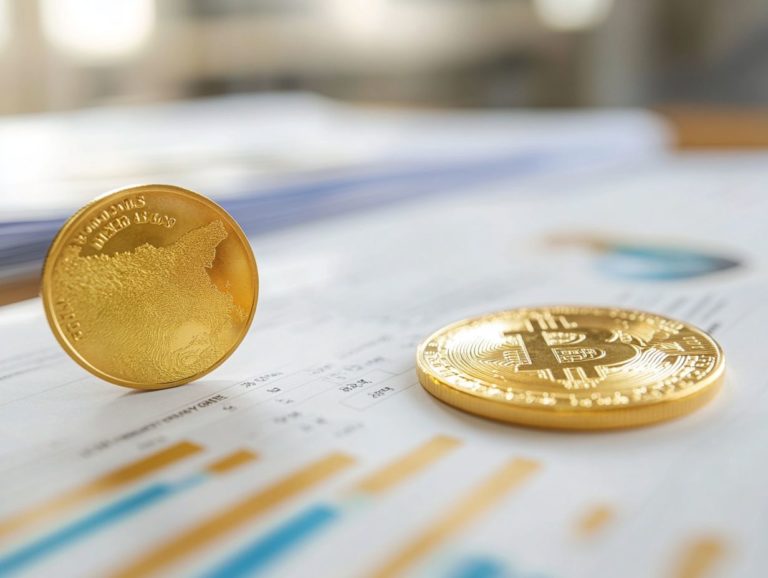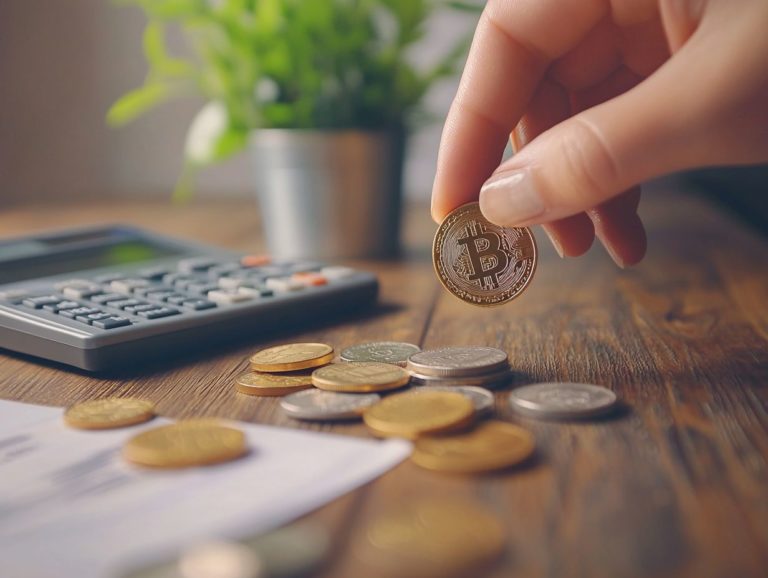The Effect of Tax Policy on Precious Metals Investment Strategies
Investing in precious metals provides you with a unique combination of stability, diversification, and the potential for long-term gains.
The influence of tax policies on these investments can greatly shape your strategy. It’s essential to understand current tax laws and their impact on your investment choices.
Get ready to explore what precious metals are, the motivations behind investing in them, and strategies to minimize your tax liability. This article highlights the long-term benefits of these investments, especially in the face of economic fluctuations.
Explore the insights offered here to learn how to optimize your portfolio while skillfully navigating the complexities of tax regulations.
Contents
- Key Takeaways:
- What are Precious Metals?
- Why Invest in Precious Metals?
- Tax Policy and Precious Metals
- Strategies for Minimizing Tax Liability
- Explore the Benefits of Investing in Precious Metals
- Frequently Asked Questions
- What is the effect of tax policy on precious metals investment strategies?
- How does the tax rate on capital gains affect my precious metals investments?
- Are there any tax benefits to investing in precious metals?
- How does the tax treatment of precious metals differ from other types of investments?
- Will the tax policy affect the demand for precious metals?
- What are some strategies for minimizing the tax impact of precious metals investments?
Key Takeaways:
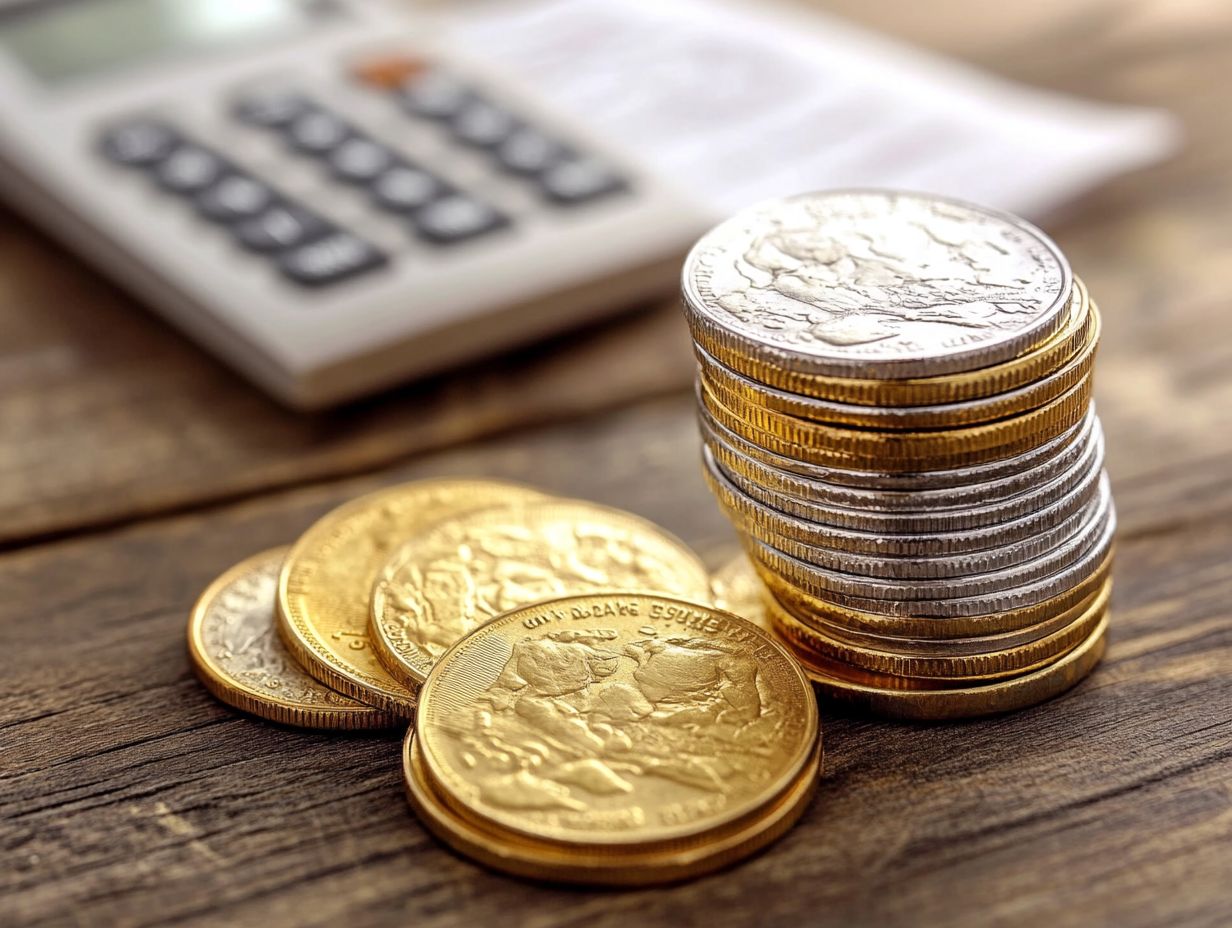
- Investing in precious metals can provide stability and diversification to a portfolio, protecting against inflation and economic factors.
- Tax policies can significantly impact precious metals investment strategies, making it important to stay informed and adapt accordingly.
- Maximize tax benefits and explore options to lower your tax bill to increase the long-term benefits of investing in precious metals.
What are Precious Metals?
Precious metals, especially gold and silver, are coveted assets recognized for their real worth and role as a hedge against inflation. These physical metals are not just commodities; they are collectibles that can add a touch of allure to your investment portfolio.
In the investment landscape, precious metals are crucial for wealth preservation and estate planning, offering both tangible and financial advantages that can lead to a more secure financial future.
Their unique qualities, such as rarity and durability, have made them valuable assets throughout history, enchanting societies and investors alike. Market demand for these metals often fluctuates with economic conditions, geopolitical tensions, and consumer interest in collectibles, all of which can indicate their value.
Keep in mind that precious metals come with specific government rules about taxes and their classification in estate plans. With careful management, these assets can play a pivotal role in enhancing wealth and preserving your legacy.
Why Invest in Precious Metals?
Investing in precious metals like gold and silver offers a myriad of advantages, especially during times of economic uncertainty and inflation. As traditional currencies may begin to wane in value, these tangible assets serve as a reliable safe haven to hedge against potential market downturns.
The tax implications tied to precious metals can be quite favorable, opening doors for capital gains and income diversification within your investment portfolio. Understanding the importance of tax planning for precious metals investors can further enhance your investment strategy.
The historical performance of these metals illustrates their resilience during crises, often outshining stocks and bonds when economic conditions turn sour. This distinctive trait reinforces their status as a trustworthy investment choice, particularly when inflation starts to erode your purchasing power.
By incorporating precious metals into your investment strategy, you can craft a well-balanced portfolio. Their prices tend to fluctuate independently from traditional market assets, shielding you from volatility while enhancing your overall returns. Precious metals are an appealing option for both seasoned investors and those just starting out on the path to securing their financial future.
Tax Policy and Precious Metals
Navigating tax policy concerning precious metals investments demands a nuanced understanding of various tax laws and IRS reporting requirements, especially regarding capital gains tax and its implications for both long-term and short-term investments.
As an investor, being well-versed in how these regulations apply can profoundly influence your tax liabilities and the overall profitability of your investment portfolio. This knowledge will shape your investment strategies within the precious metals market, including understanding the role of precious metals in tax-deferred accounts, ensuring you make informed and advantageous decisions.
Current Tax Laws and Regulations
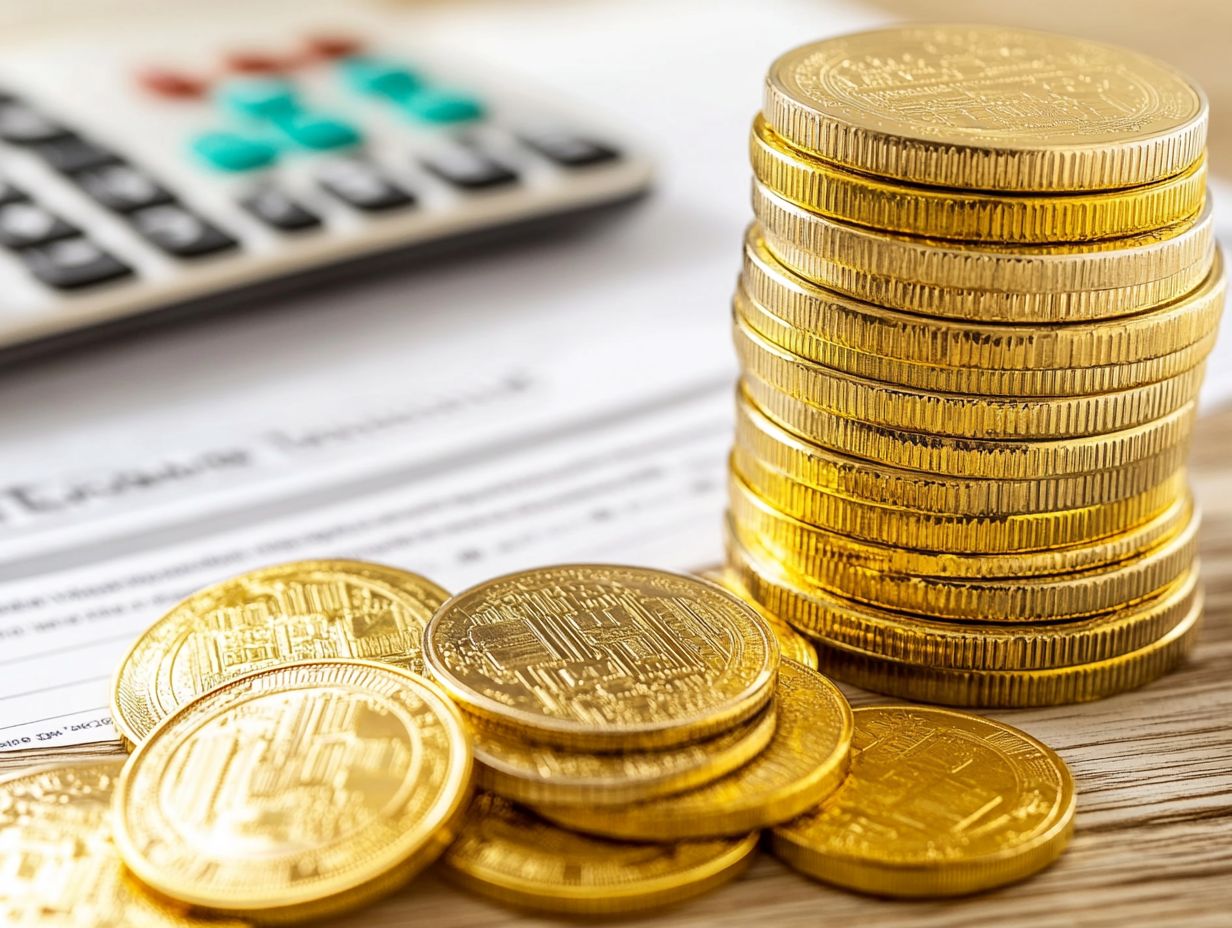
Current tax laws and regulations surrounding precious metals investments, particularly those enforced by the IRS, dictate how capital gains are treated. You must also adhere to specific reporting requirements. Grasping these laws is essential for ensuring compliance and optimizing your tax outcomes. They can differ significantly depending on factors like the type of precious metal and how long you’ve owned it.
For example, if you re a collector, it s vital to recognize that the capital gains tax a tax on the profit made from selling an asset rate on collectibles like gold and silver bullion can be markedly higher than the standard rates for other investments. The IRS guidelines require you to keep careful records of your purchases and sales, detailing the date, price, and nature of each transaction. This diligent record-keeping simplifies the accurate reporting of gains and losses and provides you with protection in the case of an IRS audit.
By maintaining thorough logs and understanding the implications of international tax on gold investments, you can navigate the intricate landscape of precious metals investment with greater confidence and ease.
Impact on Investment Strategies
The impact of tax implications on your investment strategies involving precious metals can be substantial. It shapes your decisions about when to sell, when to buy, and which metals to include in your portfolio. Think of capital gains tax as both a challenge and an opportunity, especially in light of IRS regulations that affect your assets.
Navigating these tax considerations effectively can lead to more favorable outcomes. This allows you to refine your strategies to optimize returns while minimizing tax liabilities. For example, timing your sales can be crucial; holding precious metals for over a year often qualifies you for lower long-term capital gains rates, and understanding tax credits related to precious metals can further enhance your financial strategies.
You can also diversify your investments across different metals—think gold, silver, and platinum. This can help you align your portfolio with IRS guidelines while strengthening your asset protection. Exploring strategies like tax-loss harvesting or investing through tax-advantaged accounts such as IRAs can provide significant relief, especially when understanding the tax effects of precious metals investments, enabling growth without the immediate burden of taxation.
Strategies for Minimizing Tax Liability
Crafting effective strategies to minimize tax liabilities is crucial for anyone investing in precious metals. This strategy helps you maximize your tax benefits while remaining compliant with IRS regulations.
By grasping concepts like loss carry forward, you can adeptly navigate the intricacies of capital gains tax and build a more tax-efficient investment portfolio.
Maximizing Tax Benefits
Maximizing tax benefits in your precious metals investment requires a keen understanding of the tax implications of holding physical precious metals compared to other investment vehicles. Tailoring your strategy to leverage these tax laws can help you optimize returns while minimizing your liabilities.
This involves a thoughtful analysis of capital gains taxes and exploring potential tax-deferred strategies. For example, if you hold physical assets like gold and silver coins or bullion for over a year before selling, you can benefit from lower capital gains rates, unlike stocks that may be subject to higher ordinary income tax rates. Understanding the impact of tax policy changes on precious metals can also help you make informed decisions.
Additionally, incorporating precious metals into your individual retirement account (IRA) allows for tax-deferred growth, meaning you can postpone tax payments until you withdraw funds. These strategies not only protect your wealth but also enable you to take full advantage of tax efficiencies, creating a more lucrative investment landscape overall.
Start exploring these strategies today to secure your financial future!
Alternative Investment Options
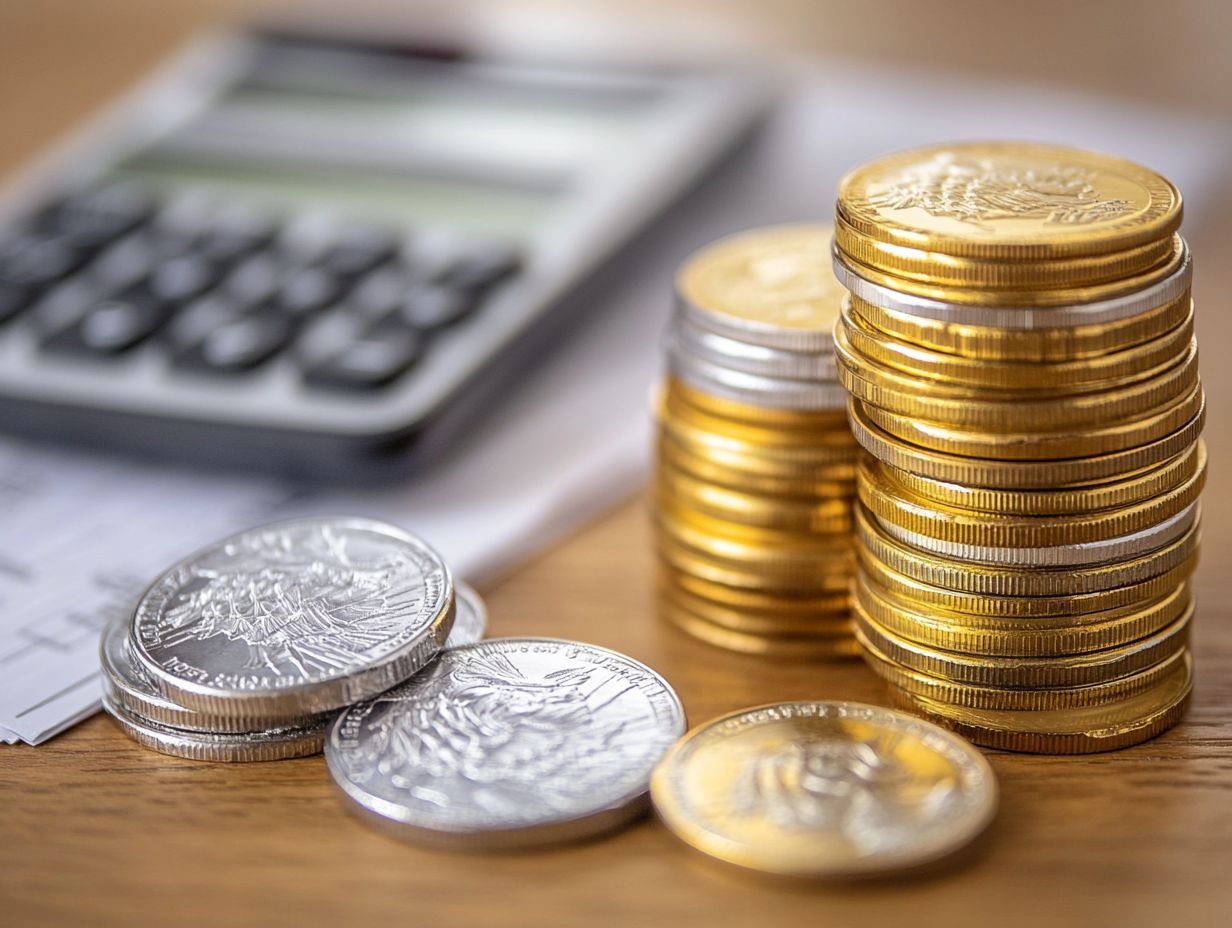
Exploring alternative investment options beyond physical precious metals opens the door to diverse opportunities. It also allows you to consider tax implications strategically. Options like self-directed IRAs (individual retirement accounts you manage yourself) and various investment accounts cater to your risk tolerance and investment goals, ensuring your portfolio is well-rounded.
In addition to IRAs, Exchange-Traded Funds (ETFs) offer a liquid way to gain exposure to precious metals without the hassle of physical storage. Mining stocks present another compelling avenue, enabling you to capitalize on the growth of mining companies involved in resource extraction.
Each alternative carries unique tax implications. For instance, assets in IRAs benefit from tax-deferred growth, while profits from ETFs may be subject to capital gains tax. By understanding these nuances, you can craft an investment strategy that aligns with your financial objectives and maximizes tax efficiency.
Explore the Benefits of Investing in Precious Metals
Investing in precious metals offers long-term benefits that can significantly enhance your investment portfolio. These assets provide both stability and diversification, especially amid fluctuating economic conditions and inflationary pressures.
Historically, gold and silver have shown remarkable performance over time, making them attractive choices for anyone looking to preserve and grow their wealth.
Stability and Diversification
Precious metals are viewed as a beacon of stability in your investment portfolio, especially when economic turbulence affects traditional markets. Their intrinsic value generally remains constant or appreciates, making them vital for those aiming to hedge against risks.
As economies face inflationary pressures and geopolitical tensions, the appeal of these metals grows. For example, during the 2008 financial crisis, gold and silver exhibited resilience, often increasing in value when equities stumbled.
It’s important to note that factors such as currency fluctuations and interest rates can significantly influence their market performance. Historical trends show that precious metals serve as a safeguard against inflation and market volatility, representing a strategic element for your long-term financial security.
Inflation and Economic Factors
Inflation and various economic factors greatly influence the long-term gains from your investments in precious metals. As fiat currencies can lose value, these metals often maintain their purchasing power, making them an attractive choice for safeguarding your assets.
This connection explains why many individuals gravitate toward these tangible assets during uncertain economic times. When inflation rises, the cost of goods increases, diminishing the value of cash savings. In such cases, the appeal of precious metals like gold and silver intensifies, as they historically act as a buffer against inflationary pressures.
As central banks implement monetary policies that may worsen inflation, diversifying your portfolio with these metals becomes prudent, pursuing both stability and growth. The intrinsic value of these commodities, paired with their limited supply, solidifies their reputation as a go-to investment during turbulent financial periods.
Frequently Asked Questions
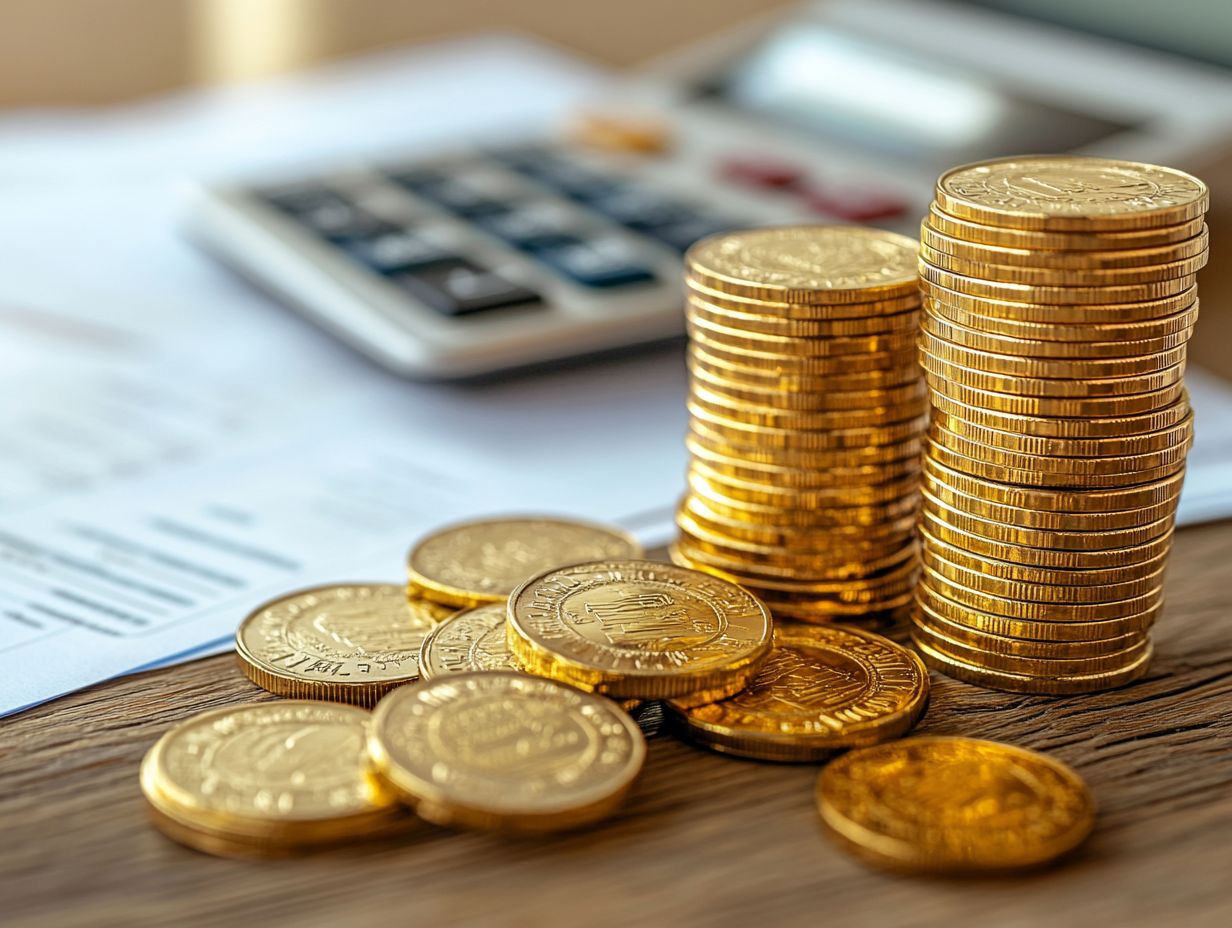
What is the effect of tax policy on precious metals investment strategies?
Tax policy significantly impacts precious metals investment strategies. Changes to tax rates or regulations can affect the cost of buying and selling precious metals, as well as any potential gains or losses from these investments.
How does the tax rate on capital gains affect my precious metals investments?
The tax rate on capital gains is the profit from selling an asset. A high tax rate reduces your overall profits, while a lower rate can boost your returns.
Are there any tax benefits to investing in precious metals?
Tax laws can offer benefits for investing in precious metals. For instance, in the U.S., gold and silver are considered collectibles and often face a lower tax rate than other investments.
How does the tax treatment of precious metals differ from other types of investments?
Precious metals are taxed differently than stocks and bonds. The tax rate on precious metal dividends is usually higher, and the holding period for long-term capital gains might be shorter.
Will the tax policy affect the demand for precious metals?
Changes in tax policy can shift demand for precious metals. If tax rates on other investments rise, investors may seek precious metals to diversify their portfolios and lower their tax bills.
What are some strategies for minimizing the tax impact of precious metals investments?
One effective strategy is to hold precious metals in tax-deferred accounts, like Individual Retirement Accounts (IRAs). Timing your purchases and sales can also maximize tax benefits.











